Latest News From Health Monitoring
Keeping you up to date on recent initiatives, software enhancements, and the national conversation about public health
Keeping you up to date on recent initiatives, software enhancements, and the national conversation about public health
On April 24th, it was discovered that a Taiwanese man contracted H7N9 after travelling to China’s Jiangsu province, where the bird flu has sickened at least 24 people and killed four. The man claimed that he had not been exposed to birds and poultry during his stay in Jiangsu, and that had not consumed undercooked poultry or eggs…
“Last week, Health Monitoring Systems added the Pennsylvania Department of Health to its growing list of a dozen state-agency customers and about 550 hospitals nationwide using its health surveillance and monitoring service. The home-state deal adds to the company’s claim as the nation’s largest provider of community-health surveillance.” Read the full article in the Pittsburgh […]
The Meaningful Use Stage 2 “Final Rules” require local and state Public Health Agencies to ramp up their Meaningful Use capabilities and establish new processes to receive the relevant public health data from Eligible Professionals and Eligible Hospitals. Meaningful Use Stage 2 begins on October 1st, 2013 for Eligible Hospitals, and on January 1st, 2014 for Eligible Professionals. This week, the Meaningful Use Stage 2 Public Health Reporting Task Force released their official Guidance and Recommendations for Meaningful Use Stage 2 Public Health Agency Readiness.
In Meaningful Use Stage 2, ongoing submission of electronic data for immunizations is mandatory for Eligible Professionals, and ongoing submission of electronic data for immunizations, reportable laboratory results, and syndromic surveillance are mandatory for Eligible Hospitals. In addition, Eligible Professionals have optional objectives for reporting syndromic surveillance data, and for reporting to cancer registries and other specialized registries (birth defects registries, chronic disease registries, traumatic injury registries, etc.)…
Metagenomics is making it easier for researchers to quickly identify the causes of outbreaks of bacterial infections by allowing them to bypass the need for growing bacteria in the lab. Researchers in the UK have used the technique to identify an outbreak strain of toxigenic Escherichia coli (STEC) which caused over 50 deaths in Germany between May and June of 2011, when more than 3,000 cases of STEC were identified…
While the world has watched the number of confirmed cases of H7N9 in China steadily increase this week, two groups of scientists who once fell under scrutiny for performing highly controversial research on the H5N1 virus are feeling vindicated.
The big question being asked about H7N9 right now is whether it’s transmissible between humans. (So far, it doesn’t appear to be.) The teams of scientific researchers at the University of Wisconsin and the Erasmus Medical Center in the Netherlands know precisely what it takes for a bird flu to mutate into a potential human pandemic strain—because they’ve created these mutant viruses in the laboratory…
The Office of the National Coordinator for Health Information Technology (ONC) and the Department of Veterans Affairs (VA) recently launched a challenge to redesign medical records. There were 230 submissions and winners focused on how to personalize and prioritize the information doctors need to know. Another important component that emerged: the need to access information from anywhere, at any time.
The Profitable Practice, a blog of Software Advice, a website that reviews the latest EMR technology, interviewed the winners of the top 3 awards. The interviews focused on learning more about how each company approached the project and chose the ‘pain points’ that their software would address. Here are a few highlights…
Our mission: Provide services that focus healthcare resources on existing and emergent threats to community health.
Our customers: State and local public health departments and health systems. We currently serve Connecticut, New Jersey, Pennsylvania, Ohio, Wyoming, and several counties in California, covering a total of more than 40 million people.
What we do: Monitor real-time health-related data for community health indicators. We collect data from nearly 600 hospitals and 3,600 ambulatory systems.
Support email:
support@health-monitoring.com
Emergency support: 1 (844) 231-5776
Additional guidance:
EpiCenter User Manual
700 River Ave., Suite 130
Pittsburgh, PA 15212
Corporate office: 1 (412) 231-2020
General calls: 1 (844) 231-5774
Emergency support: 1 (844) 231-5776

